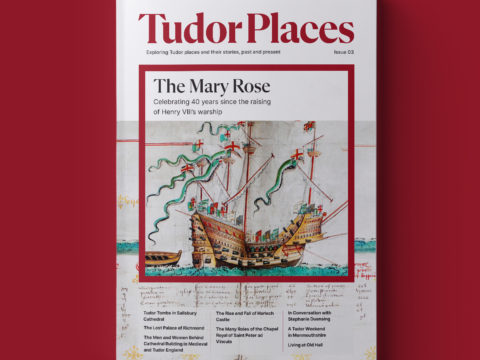Thomas More: Life Story
Chapter 9 : More and Education
Thomas More was not the first person, nor even the first man, to believe that women could be as intellectually able as men, but he was one of the earliest men in England to turn that belief into a practical theory of education. All of the girls in his household were educated equally with the boys. More, perhaps following some of Erasmus’ theories of education, or those of his friend Colet, in his new foundation of St Paul’s believed that children learn best in an atmosphere of play and enquiry.
His ‘experiment’ of teaching the girls was watched with interest. Cuthbert Tunstall (later Bishop of London, and Bishop of Durham), considered to be the most learned man in England, dedicated his famous work on mathematics, the Art of Calculation, to More and requested it be used for his children. Incidentally, Tunstall took a close interest in his relatives, the Parr family, and his work was probably used in the education of Katherine Parr, and her siblings.
From 1518 onward, More spent considerable time at court, frequently acting as Henry’s secretary in the absence of the official secretary, Richard Pace. This meant he was often away from his wife and family. Throughout this period, he corresponded with them regularly, particularly with his eldest daughter, Margaret, whose reputation as a fine scholar was growing. He wrote to them as frequently as he could, the affectionate letters of a father missing seeing his family grow up – a family that increased when More’s first father-in-law, John Colt, left him the wardship of his youngest son, Thomas Colt, who joined the household at Bucklersbury in 1521.
Despite his frequent absences, More continued to ensure that his ‘school’ as he called it, had the best teachers. He even engaged Nicholas Kratzer, later famous for his creation of the clock at Hampton Court, to teach mathematics and astronomy. Margaret’s prowess was such that he ‘accidentally’ showed some of her work to his colleagues – in particular, he mentions that he has shown ‘your charming letter, my dearest Margaret’ to ‘a young man of the noblest rank and of the widest attainments in literature…’ The young man was no other than Reginald Pole, second cousin to the King and, at the time, in high favour. Pole would later become Henry’s greatest adversary, and, eventually, Cardinal-Archbishop of Canterbury under Mary I.
Margaret herself was one of the first Englishwomen to publish a book and probably the first to publish in English. (It was not Katherine Parr, as is often claimed.) In 1524, Margaret’s translation of Erasmus’ paraphrases on the Lord’s Prayer was published by Thomas Berthelet. (It was soon after called in on suspicion of heresy, as no licence had been acquired, but Cardinal Wolsey swiftly saved Margaret from embarrassment by granting one when requested).
Nevertheless, More, along with other proponents of female education such as the Spaniard, Luis Vives, still believed that the most important virtues in a woman were chastity and obedience to the proper commands of her father or husband. Education was just more likely to mould women who could better resist the temptations of their weak nature.
In 1521, Erasmus wrote to Budaeus about More’s education programme for his daughters. He was, he said, quite converted to the notion of educating women, which previously he had thought useless. He realised that through education they would be preserved from idleness, imbibe noble precepts and trained to virtue. To those who thought that learned wives might disobey their husbands, he could see no reason to fear that, unless the husband was trying to exact obedience to commands that ought not to have been made to ‘honest and virtuous’ wives. According to Erasmus, there was now no nobleman in England who did not seek to have all his children well-educated.
More himself was continually distracted from any scholarly plans he might have had by the pressure of official business. One of his less palatable tasks was to convey Henry’s wrath to the City of London, when its citizens reacted badly to the execution of the Duke of Buckingham in 1521. Buckingham had been one of Sir John More’s clients, perhaps introduced to him by Morton, but this did not prevent More senior from being obliged to sit as one of the judges at Buckingham’s trial.



